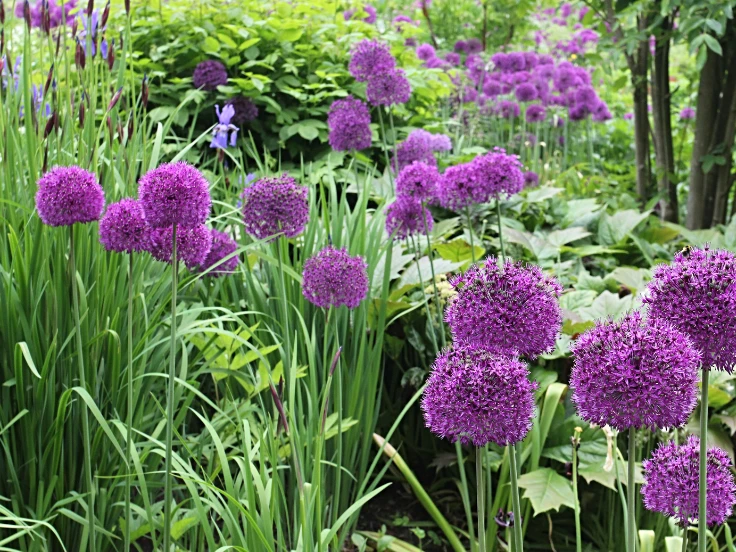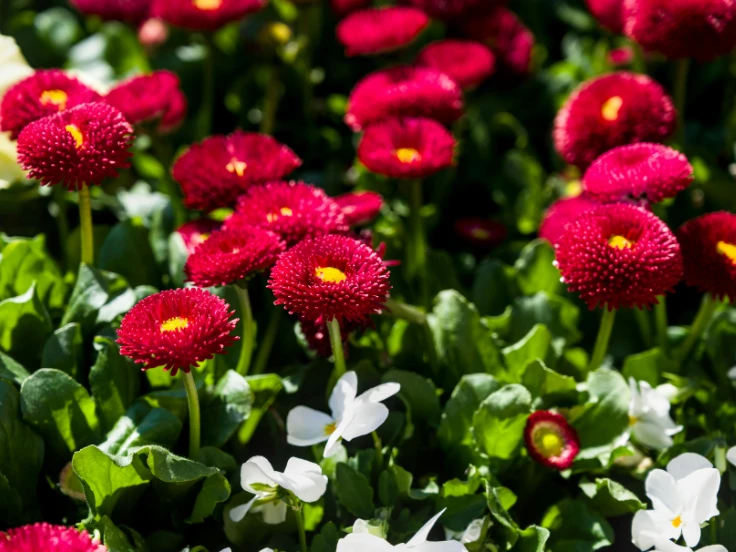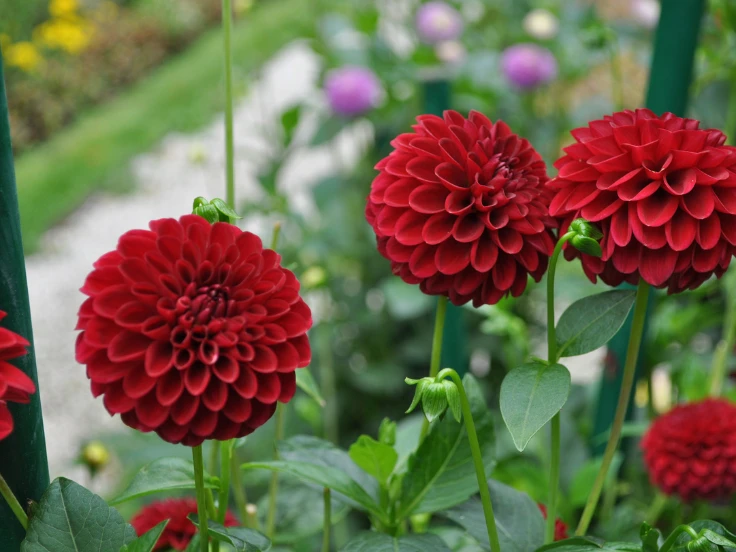While spring often gets the spotlight in gardening, autumn is equally if not more favorable for perennial flowers for fall planting. The cooler temperatures and consistent moisture make it easier for roots to establish without heat stress.During this season, the soil remains warm while the air cools, creating ideal growing conditions.
Moreover, instead of expending energy on blooming, perennials focus on root development, which results in stronger, healthier plants by spring.In addition, fall gardening means fewer weeds and pests, allowing your perennials to settle in undisturbed. Consequently, gardeners who plant in autumn enjoy earlier and more vibrant blooms the following year.
How to Choose the Best Perennial Flowers for Fall Planting

Choosing the right perennial flowers for fall planting ensures a thriving, low-maintenance garden. Therefore, it’s important to select plants suited to your soil type, temperature, and light exposure.Native species such as echinacea, black-eyed Susans, and hostas are exceptional choices. They adapt well to cooler climates and require minimal upkeep.
Additionally, these plants can survive harsh winters and bloom vigorously once spring arrives.To maintain interest throughout the year, choose a mix of early-, mid-, and late-blooming varieties. This approach guarantees steady color, texture, and fragrance for every season.
Top Perennial Flowers for Fall Planting That Thrive in Cool Weather
Not all perennials react the same to dropping temperatures. Fortunately, the following perennial flowers for fall planting are hardy, colorful, and easy to maintain. These resilient blooms bring warmth and life to your garden even as the season cools. With the right selection, your autumn landscape can stay vibrant long after summer fades.
Best options include:
- Coneflower (Echinacea): Loved by pollinators and perfect for sunny borders.
- Black-eyed Susan (Rudbeckia): Adds golden tones and strong seasonal contrast.
- Hosta: Provides lush foliage and thrives in shaded areas.
- Peony: Establishes deep roots in fall and rewards you with fragrant blooms.
- Daylilies: Adaptable, dependable, and rich in color variety.
- Sedum (Stonecrop): Great for dry soil, offering late-season blooms.
- Asters: Bring vibrant purples and pinks to late autumn landscapes.
As a result, these species are not only decorative but also beneficial for bees, butterflies, and other essential pollinators.
Essential Tips for Successful Perennial Planting in Fall
Planting in autumn requires thoughtful preparation. Therefore, proper soil management and timing ensure your perennial flowers for fall planting establish effectively before winter. By taking these steps early, you give your garden a strong foundation for lush spring growth.
Follow these practical steps:
- Test soil quality: Check pH balance and nutrient composition.
- Add compost: Enrich soil with organic matter for stronger roots.
- Water deeply: Keep soil moist but avoid overwatering.
- Apply mulch: Retains soil warmth and reduces weed growth.
- Plant early: Allow at least six weeks before frost sets in.
- Limit fertilizer: Encourage natural hardening rather than tender shoots.
By following these steps carefully, your perennials will be ready to thrive once spring warmth returns.
Low-Maintenance Fall Perennials That Brighten Your Garden
For those short on time, low-maintenance fall perennials bring lasting beauty with minimal effort. Furthermore, these hardy plants thrive even when neglected, providing color and texture year after year. They’re the perfect choice for gardeners who want stunning results without constant upkeep.
Top easy-care varieties include:
- Coreopsis: Golden flowers that bloom long into fall.
- Sedum: Highly drought-tolerant and visually striking.
- Daylilies: Dependable re-bloomers that suit most soils.
- Russian Sage: Silvery foliage and aromatic lavender blooms.
- Yarrow: Rugged and ideal for borders or rock gardens.
Once established, these varieties require little more than pruning and occasional watering. Consequently, they’re perfect for gardeners seeking effortless beauty.
Designing an Autumn Garden with Perennial Flowers

Creating a balanced fall garden involves pairing colors, textures, and heights. For instance, combine tall coneflowers with low-spreading sedums for natural layering.Complementary colors such as orange and purple can make beds stand out beautifully. Moreover, integrating ornamental grasses adds motion and softens transitions between plant groups.Ultimately, this design approach transforms your garden into a dynamic, ever-changing landscape that delights from fall through spring.
Garden Inspiration from Hamburg and Autumn Perennials
If you’re exploring Hamburg places to visit, the city’s parks and botanical gardens offer outstanding examples of perennial flowers for fall planting done right.For example, Planten un Blomen Park and the Botanical Garden of the University of Hamburg showcase vibrant perennial arrangements that bloom across multiple seasons.
These living exhibits demonstrate how careful fall planting guarantees long-term color and structure.Therefore, gardeners can take inspiration from Hamburg’s designs blending sustainability, art, and nature to create gardens that flourish year-round.
How to Protect Perennial Flowers for Fall Planting from Frost
As the first frost nears, extra care ensures your perennials survive and thrive. Moreover, a few easy steps make a huge difference. Therefore, with proper protection, your fall plantings will stay healthy and burst into life once warmer days return. In fact, consistent care during this period guarantees stronger roots and vibrant blooms in the next season. Ultimately, taking these precautions secures a thriving garden year after year.
Protection strategies:
- Mulch generously: A thick layer locks in soil warmth.
- Keep soil moist: Hydrated roots handle freezing better.
- Avoid nitrogen fertilizers: Prevents soft growth prone to frostburn.
- Use covers: Burlap or frost cloth shields delicate tops.
- Mark plant spots: Makes spring maintenance easier.
As a result, your perennial flowers for fall planting will remain healthy and strong throughout the colder months.
Mistakes to Avoid When Planting Perennial Flowers in Fall

Avoiding common mistakes is crucial for long-term success. However, even experienced gardeners can slip up occasionally. Therefore, recognizing these pitfalls early ensures your fall perennials stay strong. Moreover, timely care can turn struggling plants into thriving blooms. Ultimately, prevention leads to a healthier garden.
Common pitfalls:
- Planting too late: Roots need time before the freeze.
- Ignoring soil drainage: Waterlogged soil suffocates roots.
- Crowding plants: Prevents proper airflow and growth.
- Skipping mulch: Exposes roots to harsh temperature shifts.
- Overwatering: Encourages rot and fungal disease.
By steering clear of these errors, your garden will remain lush, balanced, and resilient.
FAQs
Q1: When is the best time to plant perennials in fall?
Ideally, plant six to eight weeks before the first frost to ensure strong roots.
Q2: Can fall-planted perennials survive winter?
Yes, most hardy varieties thrive when mulched and well-watered.
Q3: Which flowers bloom late into fall?
Asters, sedum, and chrysanthemums continue flowering until frost.
Q4: Can I plant bulbs and perennials together?
Absolutely! Layering bulbs with perennials adds seasonal depth and color.
Conclusion: Lasting Beauty of Fall Perennials
Investing in perennial flowers for fall ensures your garden stays vibrant year-round. Autumn’s mild weather helps plants establish strong roots for healthy blooms, enriches soil, and attracts pollinators. Learn what flowers to plant in August to extend your garden’s beauty from late summer into fall.For instance, peonies and echinacea not only bloom beautifully but also strengthen biodiversity in your garden. Consequently, the ecosystem becomes more balanced and self-sustaining.
In fact, many travelers exploring Hamburg places to visit can witness similar principles in the city’s lush, sustainable parks. Meanwhile, such public gardens demonstrate how thoughtful design enhances natural growth. Similarly, home gardeners can recreate this harmony by focusing on seasonal timing and plant diversity. For ideas on perfect pairings, explore what flowers to plant with roses. Thoughtful fall planting transforms your garden into a living masterpiece that grows stronger and more beautiful each year.


















